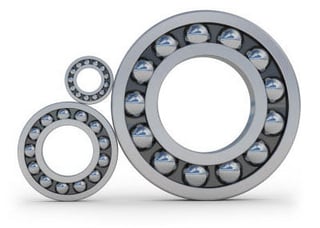While CoVest wants our members to find the best MRO savings, we'd also like to help our members with their practical application of these categories. In collaboration with Motion Industries and their instructive video series MiHOW2, we've provided information on how to properly store and install bearings below.
Bearing Storage
Implementing proper storage will reduce the chances of damage before installation and ensure that your bearings will meet their intended shelf life. Because bearings are supplied as precision machine components, they should be respected and treated as such. Implementing the following storage rules is key.
- Don't take any chances! If the external packaging is significantly damaged, return the bearing for replacement. Considering replacing bearings if package is:
- Dented or torn
- Dirty, faded or oily
- Written upon
- Has open tabs
- Product label or bar code is ineligible
- The storage area needs to be cool! Make sure the stocking area has a steady temperature with controlled humidity.
- The area should be vibration and draft free
- Bearings should be stored flat, preferably with adjustable shelves
- Most importantly, employ the "first in, first out" organizing rule
Bearing Installation
The proper method of bearing installation could maximize bearing efficiency and save money. Almost 30% of premature bearing failures are due to poor installation and handling. First let's review the steps of installing a bearing:
- Apply oil to the shaft
- Place bearing on shaft
- Take collet tool and put it on top of bearing
- Use dead blow hammer to advance the bearing to the proper location on the shaft
Follow these installation tips to ensure your bearings are in tip-top shape:
- Hands off! Do not let bare hands come in contact with the bearing. Skin contact could cause corrosion in the steel.
- If unsure of which size impact ring (or collet) to use and you do not have an informative chart follow these steps:
- Make sure the bore (hole) is larger than the shaft
- Make sure the outside diameter of the collet is approximately the size of the ring you’re driving
- You should have clearance over the shift as well as meet up with the driving surface of the bearing
- Do not drive through the rolling elements. Always drive on the portions of the bearings that is being fitted
- When you drive a bearing, you always want to make sure its seated against the shoulder
- Make sure the bearing has maintain its internal clearance when seated on the shoulder by spinning the bearing
- Never strike a bearing directly with harden steel or brass hammer because harden steel could damage the bearing and brass could flake off and get into the bearing. Use a dead blow hammer
Always remember to wear the proper PPE (Personal Protective Equipment) when handling MRO equipment. Learn more about workplace injuries and prevention, here.
Motion Industries
The above information has been brought to you in collaboration with Motion Industries' video series MiHow2. MiHow2 is a part of Motion Industries' Knowledge Hub where users can get an in-depth understanding of the MRO products they can purchase through Motion.
Motion Industries is a leading industrial parts distributor of bearings, mechanical power transmission, electrical and industrial automation, hydraulic and industrial hose, hydraulic and pneumatic components, industrial products, safety products, and material handling. Motion Industries has over 550 operations including 15 distribution centers throughout North America, serves more than 150,000 customers and has an annual sales of $4.8 billion. To find out more about Motion visit them at https://www.motionindustries.com
Or visit www.covest.com to learn how a CoVest membership can get you exclusive deals to Motion products.
Click image to download!




